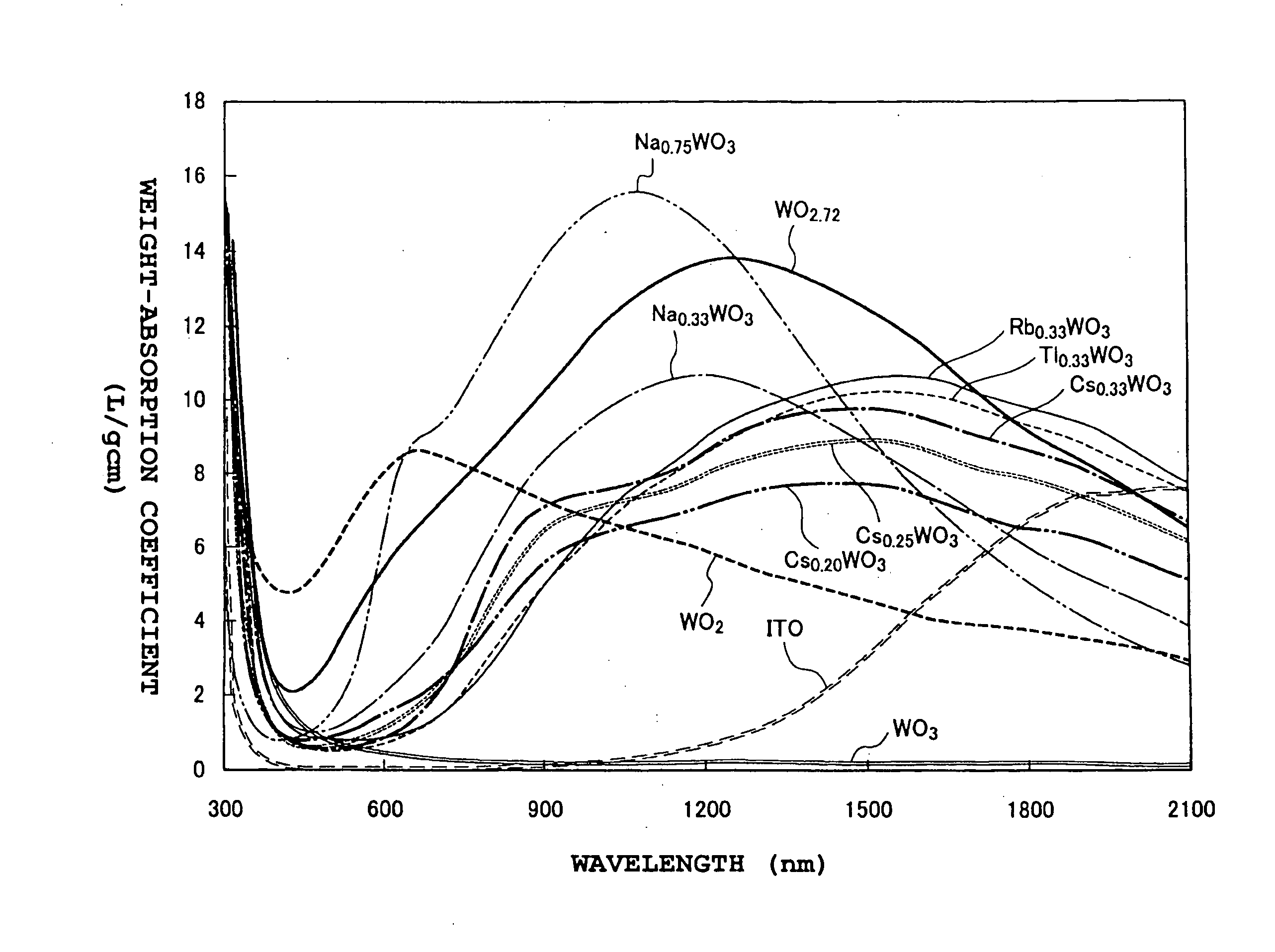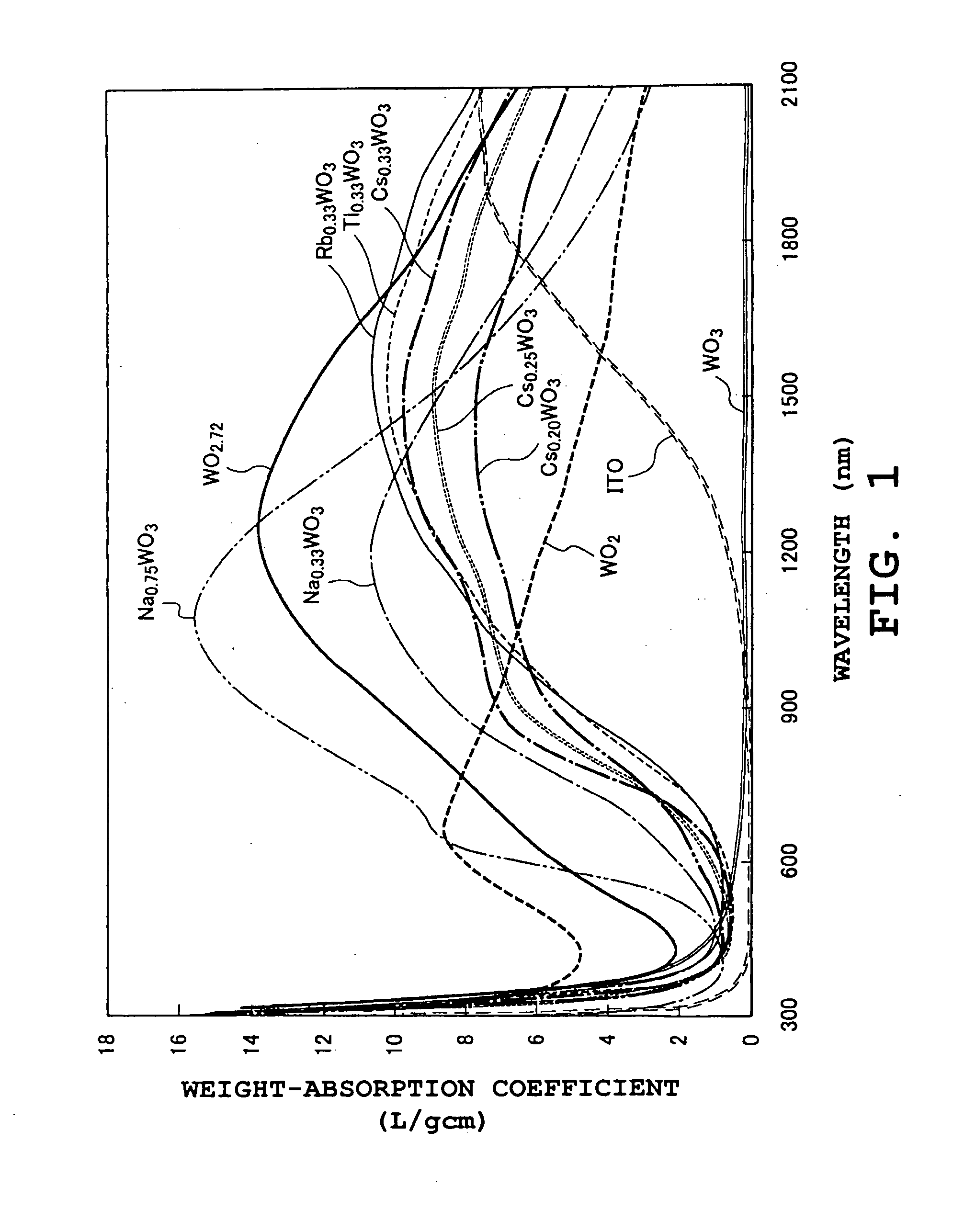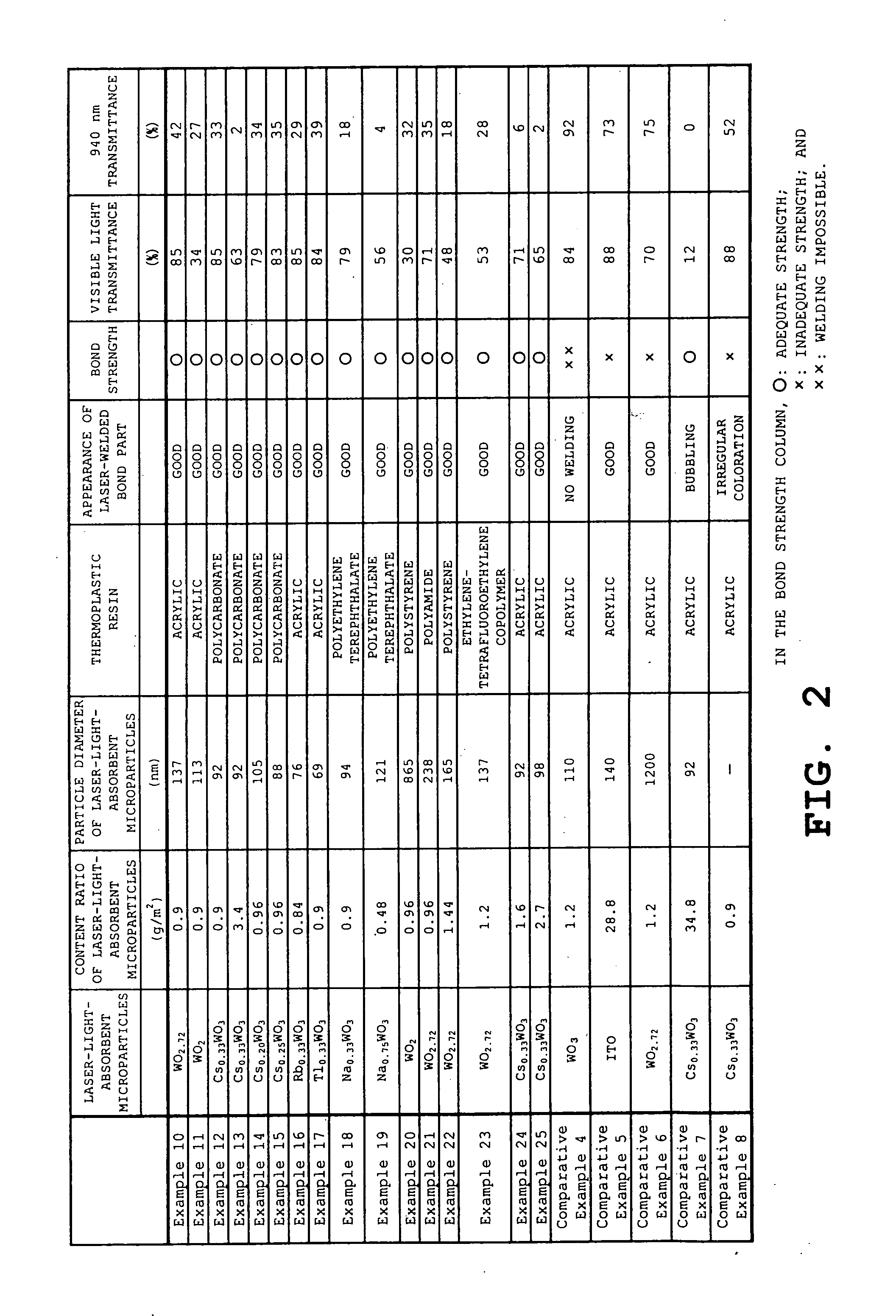Light-absorbent resin composition for laser welding, light-absorbent resin molding, and method for manufacturing light-absorbent resin molding
a technology of laser welding and light-absorbing resin, which is applied in the direction of synthetic resin layered products, auxillary/base layers of photosensitive materials, spectral modifiers, etc., can solve the problems of poor thermal stability of laser light-absorbing materials, easy accumulation of carbon black, and undesirable darkening of bonded parts, etc., to achieve easy laser welding, increase the range of laser welding applications, and facilitate molded
- Summary
- Abstract
- Description
- Claims
- Application Information
AI Technical Summary
Benefits of technology
Problems solved by technology
Method used
Image
Examples
examples
[0090]Examples and comparative examples of the present invention will next be specifically described. However, the present invention is not limited by the examples given below.
example 1
[0091]Tungsten hexachloride WCl6 was dissolved in ethanol, thoroughly stirred, and then dried at 110° C. The dried product was then heated at 350° C. while 2% H2 gas in N2 gas as a carrier was fed, and the product was then baked at 800° C. in an argon atmosphere to yield WO2.72 nanoparticles. The WO2.72 nanoparticles were confirmed to be single-phase by X-ray analysis.
[0092]A tungsten oxide WO2.72 nanoparticle dispersion (solution A) was prepared by a process in which 5 wt % of the WO2.72 nanoparticles, 37.5 wt % of a toluene solution (40% active component) of UG-4030 (solid powder at room temperature; glass transition temperature: 52° C.) styrene / acrylic polymer dispersing agent manufactured by Toagosei (Inc.) as a polymer-based dispersing agent, and 57.5 wt % of toluene were weighed and placed in a paint shaker in which zirconia beads were placed, and the mixture was crushed / dispersed for six hours.
[0093]The dispersed particle diameter of the nanoparticles in the particle dispersi...
example 2
[0095]The same procedure as in Example 1 was performed, except that the temperature of heating during the feed of H2 gas was changed from 350° C. to 650° C., and WO2 nanoparticles were generated. A toluene dispersion (solution B) of WO2 was prepared according to the same procedure as Example 1. Solution B was diluted using toluene to give a concentration of 0.01 wt % of the laser-light-absorbing agent, and the spectral transmittance was measured, and the calculated weight-absorption coefficient is indicated by the thick dashed line in FIG. 1. The dispersed particle diameter of the nanoparticles in the nanoparticle dispersion (solution B) was 113 nm. Since there also was some absorbance of a visible light component, the dispersion had a dark blue color. According to the absorption profile shown in FIG. 1, the WO2 nanoparticle dispersion was confirmed to be favorable for absorbing laser light from an Nd: YAG laser having a wavelength of 1064 nm, and particularly the laser light from a...
PUM
| Property | Measurement | Unit |
|---|---|---|
| glass transition temperature | aaaaa | aaaaa |
| grain size | aaaaa | aaaaa |
| wavelength | aaaaa | aaaaa |
Abstract
Description
Claims
Application Information
 Login to View More
Login to View More - R&D
- Intellectual Property
- Life Sciences
- Materials
- Tech Scout
- Unparalleled Data Quality
- Higher Quality Content
- 60% Fewer Hallucinations
Browse by: Latest US Patents, China's latest patents, Technical Efficacy Thesaurus, Application Domain, Technology Topic, Popular Technical Reports.
© 2025 PatSnap. All rights reserved.Legal|Privacy policy|Modern Slavery Act Transparency Statement|Sitemap|About US| Contact US: help@patsnap.com



